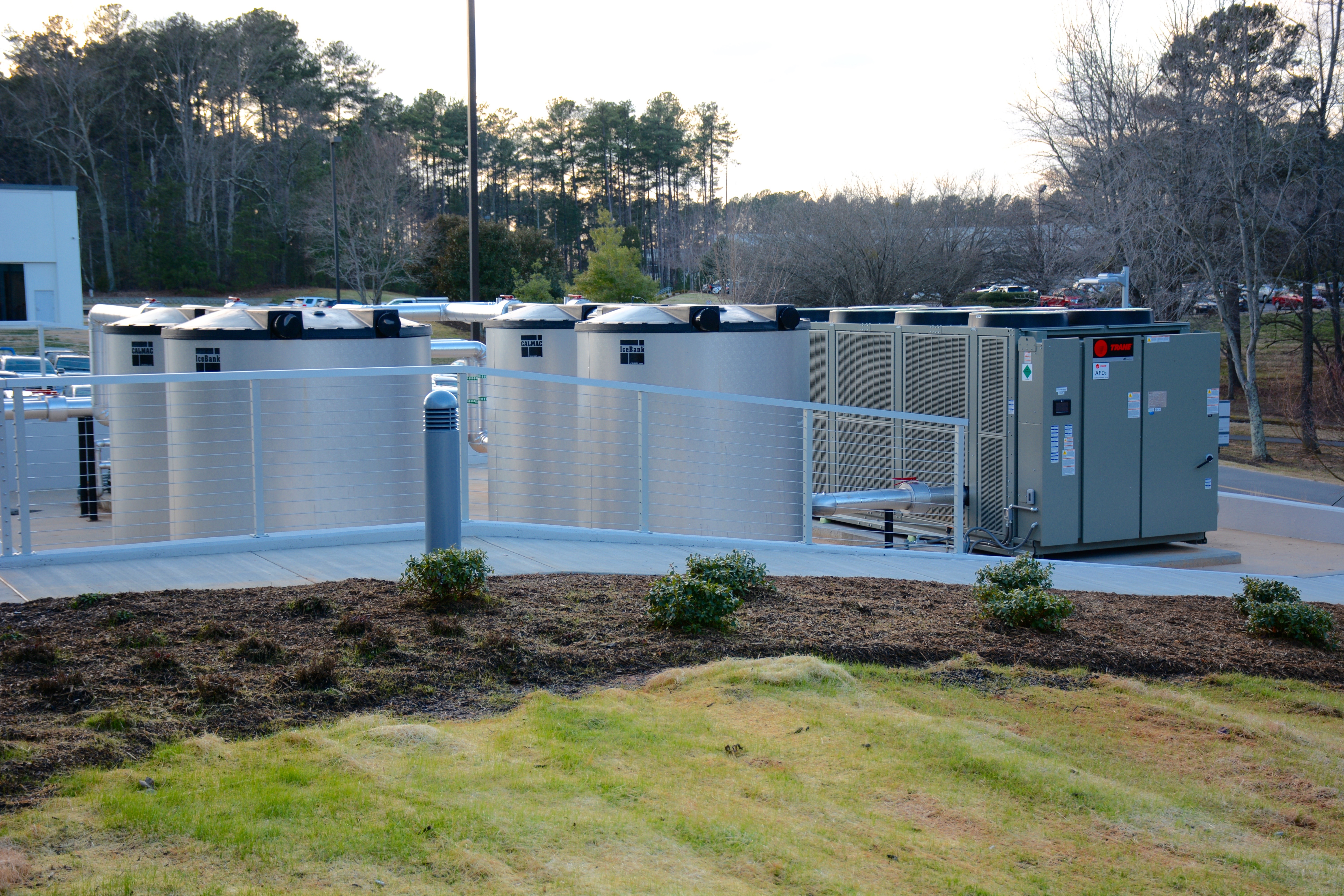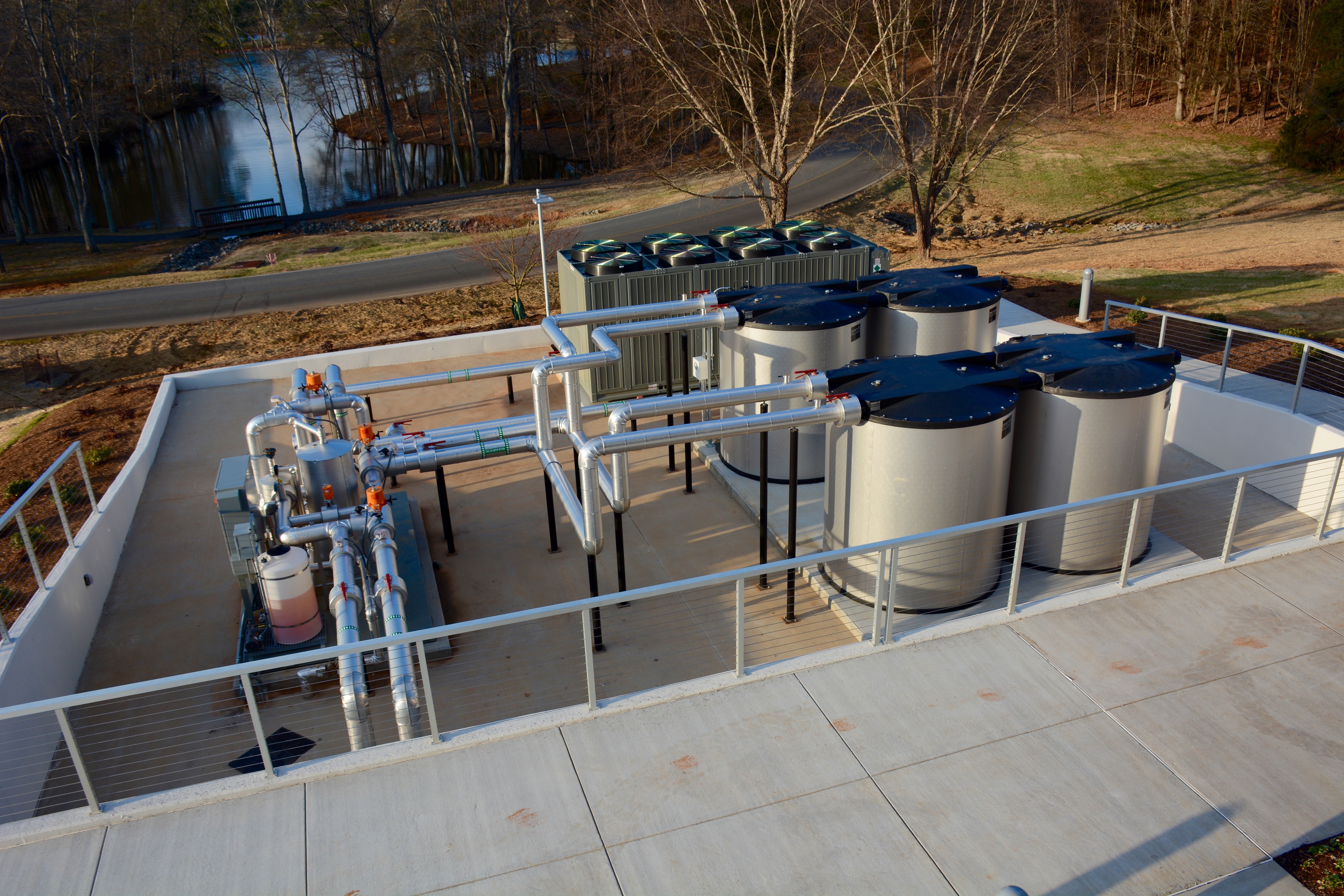Thermal Energy Storage for a Low-Carbon Future
Buildings are responsible for 47 percent of global greenhouse gas emissions and, according to Navigant Research, the global building stock is expected to grow by 13 percent from 2014 to 2024.[1]However, the contribution buildings are making to global greenhouse gas emissions can be changed. Much of those emissions come from energy used to operate buildings - this can be reduced, but how? One key element is thermal energy storage technologies.

Thermal energy storage technology allows excess energy, from a variety of renewable energy sources, to be stored and used at different times throughout the day, lessening the demand on and use of the grid. Thermal energy storage technology is becoming more prevalent as the industry looks for ways to increase resilience, improve sustainability, and lower operating costs. Shifting peak demand to off-peak hours helps utilities plan for peak capacity requirements, and helps the grid incorporate more renewables. At the same time, it helps electricity customers save money and reduce emissions.
Thermal energy storage systems add considerable value to utilities. The research project,Valuation of Thermal Energy Storage for Utility Grid Operators,conducted by the Western Cooling Efficiency Centerat the University of California-Davis (UC Davis), found that thermal energy storage is up to 77 percent more valuable than utilities previously estimated.[2]This research demonstrated that the current method for estimating the electrical grid impact of thermal energy storage systems, based on a "10-day average baseline" and "typical meteorological year (TMY3)," underestimates the impact of disconnecting the cooling system on the electrical grid; thermal energy storage can have a major influence on reducing electrical grid reliance and use. In fact, it's already doing more than we thought to help reduce greenhouse gas emissions.
As a distributed energy resource, thermal energy storage improves the utilization of transmission and distribution lines, and renewable generation. Therefore, it's important that we accurately estimate electrical grid impact of thermal energy storage devices to allow for resource adequacy planning, and proper financial compensation for the service they provide. Thermal energy storage requires a holistic view of energy use; it must take into consideration how it can mitigate peak load demand, and the ambient conditions at which peak load is evaluated. As the ambient temperature increases, the value of stored thermal energy increases.
Thermal energy storage has the most value when it's needed the most. Therefore, its benefit to the grid should be based on how it can perform in extreme-heat conditions. This value is most accurately quantified when based on an American Society of Heating, Refrigerating and Air-Conditioning Engineers (ASHRAE) 1-in-10 heat event approach (hottest hour in 10 years), and when accounting for the dynamic nature of building load.

The ASHRAE approach is often used for traditional utility infrastructure, and includes more extreme weather conditions. When this approach is applied to thermal energy storage, the value increases by 28 percent compared with other approaches.2The prevalent "10-day average baseline" approach underpredicts the value of thermal energy storage up to 77 percept, by excluding demand response events, weekend, and holiday heat events.2When weekends are excluded, "temperature drift", and the significant higher thermal loads required to offset on Mondays following a hot weekend, are not evaluated. To properly quantify the value of thermal energy storage, the value should be based on the load that would have otherwise been needed to provide cooling during extreme-heat conditions. The UC Davis findings reinforce the benefits of thermal energy storageto offset thermal load, and show how we can more accurately estimate electrical grid impact.
Looking more closely at the buildings themselves, the HVAC system is one of the biggest energy-use culprits, making up almost 40 percent of that energy use.1 This is due to conventional air-conditioning systems that run a chiller during peak energy usage and demand times to instantaneously cool. By using thermal energy storage systems, building owners can store energy for later use. These cooling systems run the same chiller mentioned above, but at off-peak or lower-cost times, to store energy in thermal energy storage tanks. The stored energy can then be used to cool the building during peak demand and rate periods, with or without instantaneous cooling from the chiller. These systems help optimize peak load management and can boost renewable resource use by as much as 50 percent.[3]In doing so, grid dependency is reduced, lowering the utility bill.
Even though buildings are large contributors to global greenhouse gas emissions, there is something we can do. Using thermal energy storage systems not only bring those emissions down, but can also save money. It's a win-win. With a better understanding of energy storage benefits, building owners can optimize sustainable building designs and respond more intuitively to grid demand and cost pressures - leading to fewer overall greenhouse gas emissions and lower energy costs. With these benefits in mind, thermal energy storage will be essential for a low-carbon future.
Mark MacCracken is Vice President of the CALMAC portfolio at Trane.
TRANS | Trane.com/energystorage
[1]Navigant Research, Global Building Stock Database. https://www.navigantresearch.com/research/global-building-stock-database. Accessed March 21, 2018.
2Dichter N, Modera M, Fortunato P. Valuation of Thermal Energy Storage for Utility Grid Operators. https://www.trane.com/content/dam/Trane/Commercial/global/about-us/Thermal%20Energy%20Storage%20Case%20Study.pdf. Accessed March 12, 2018.
[3]Reindl D, Van Asselt A, Nellis G, Klein S. Design and Utilization of Thermal Energy Storage to Increase the Ability of Power Systems to Support Renewable Energy Resources. 2017. https://www.techstreet.com/standards/rp-1607-design-and-utilization-of-thermal-energy-storage-to-increase-the-ability-of-power-systems-to-support-renewable-energy-resources?product_id=1982754.Accessed March 12, 2018.
Volume: 2018 May/June












